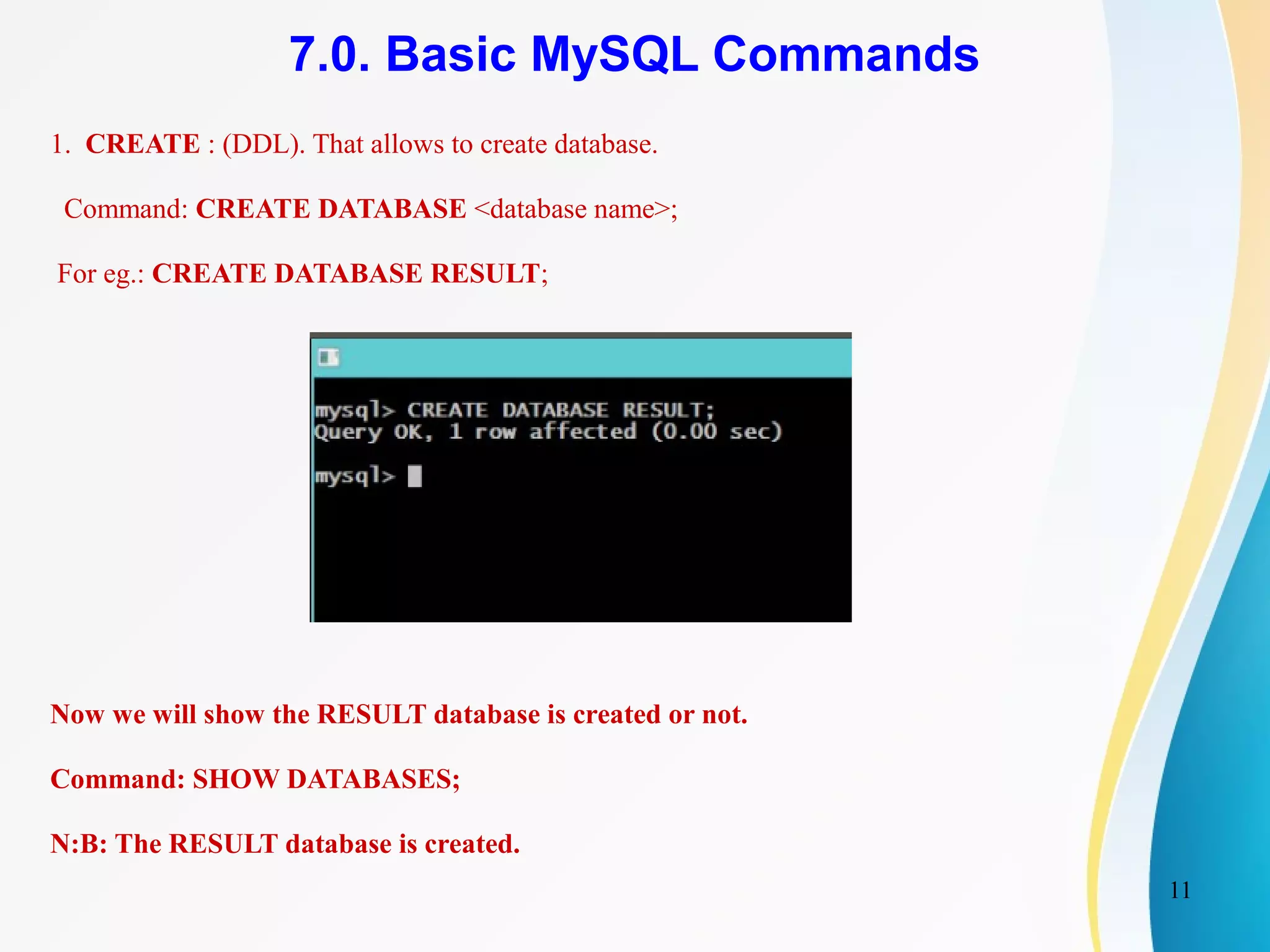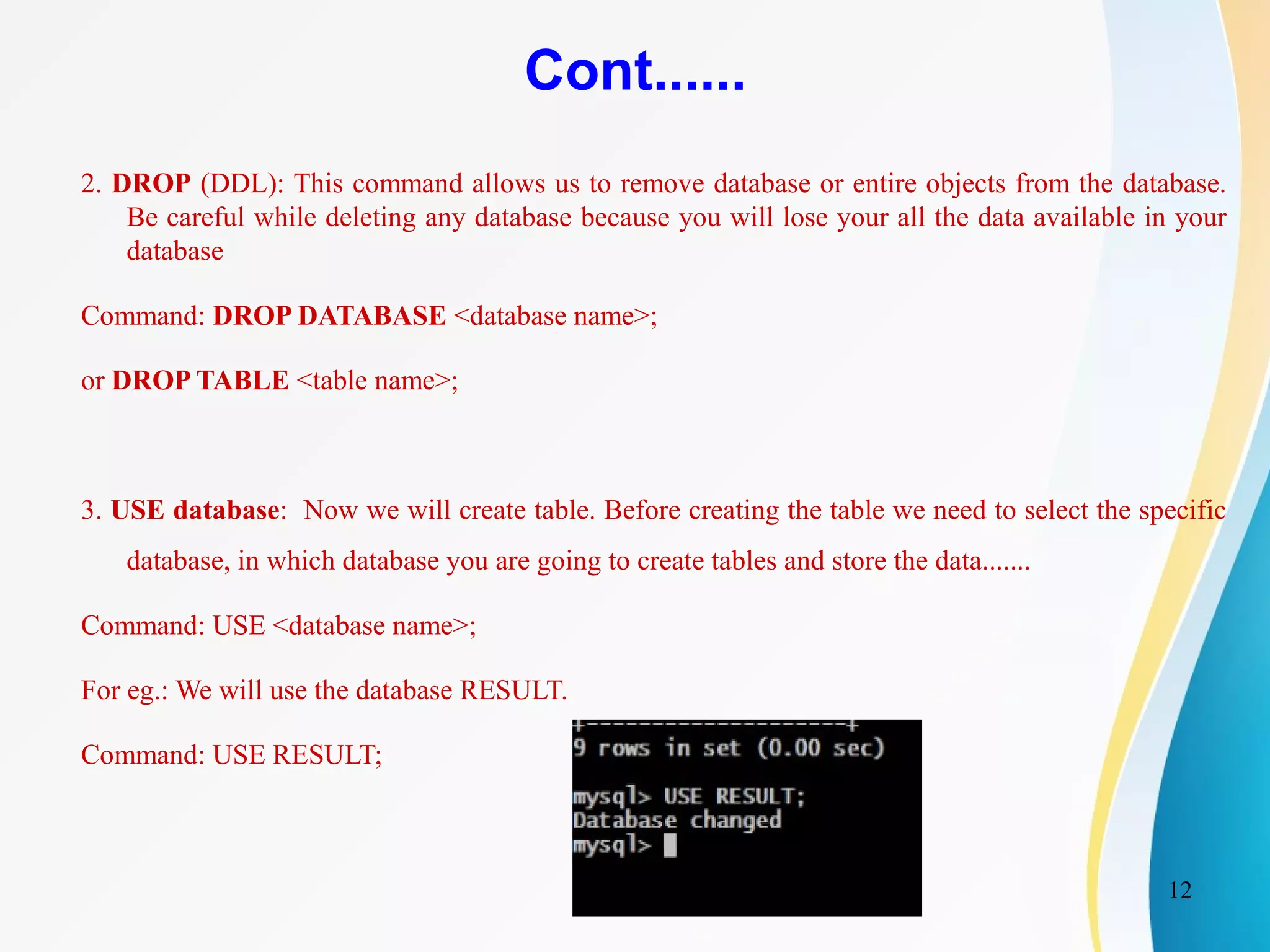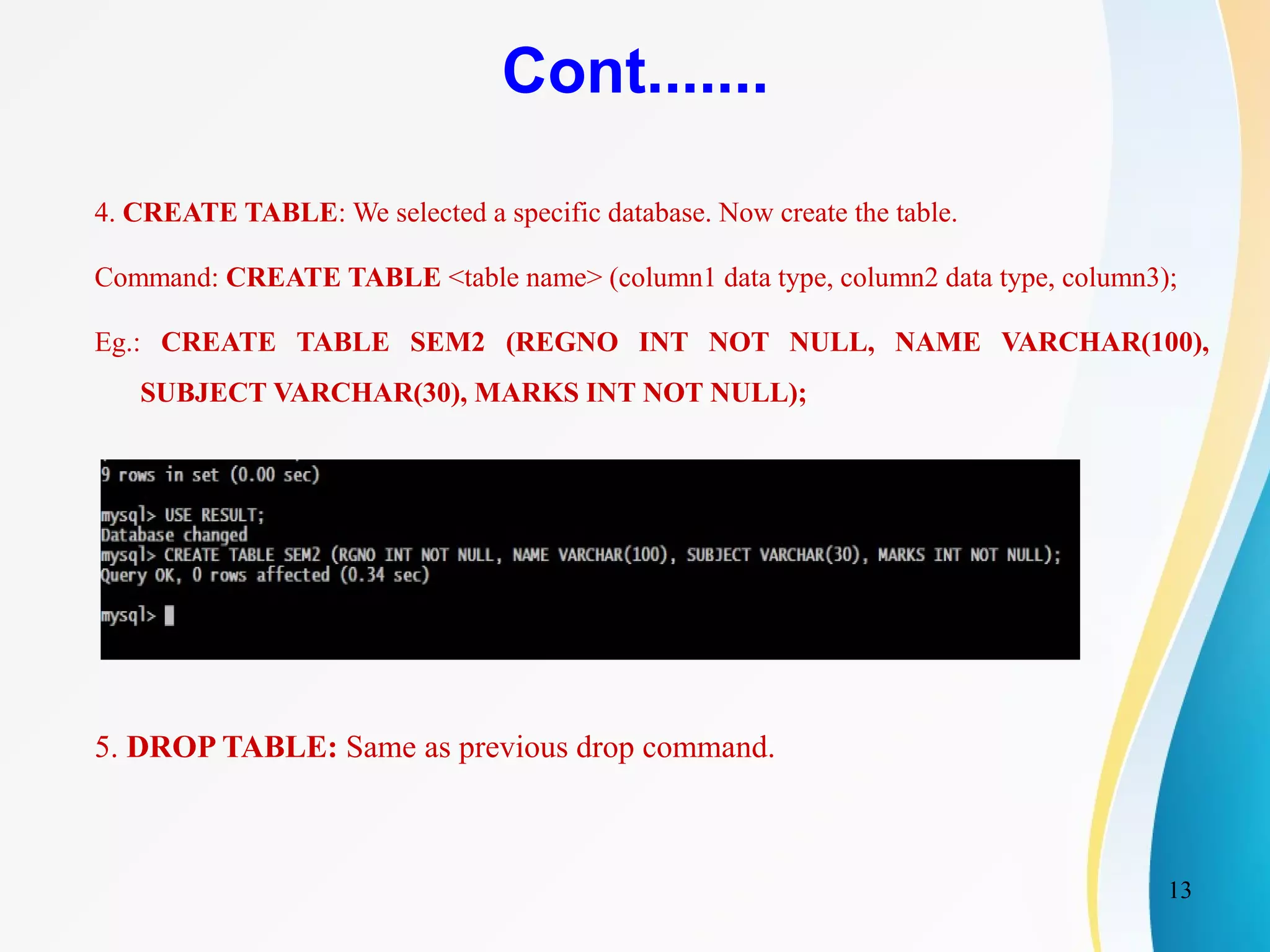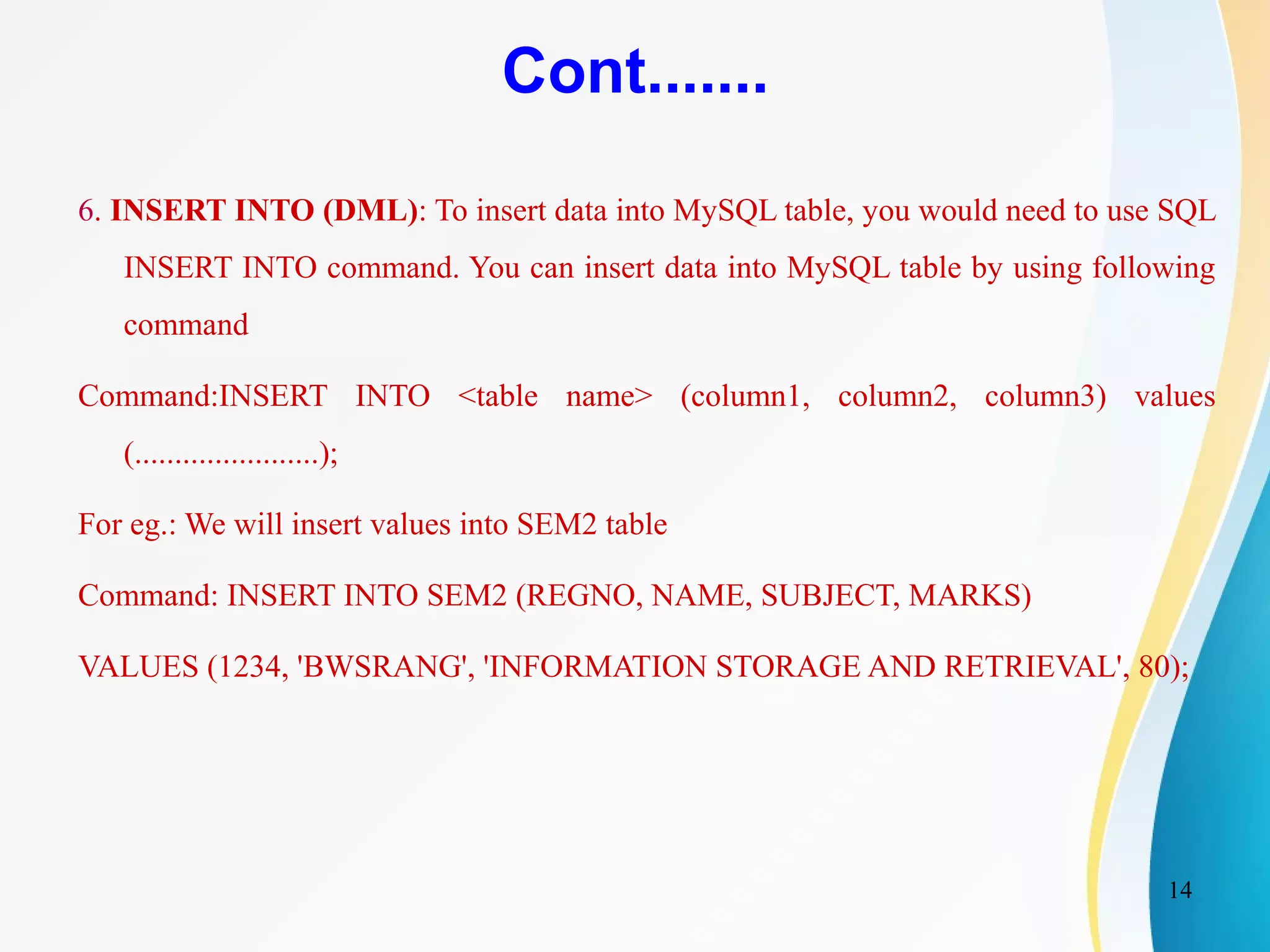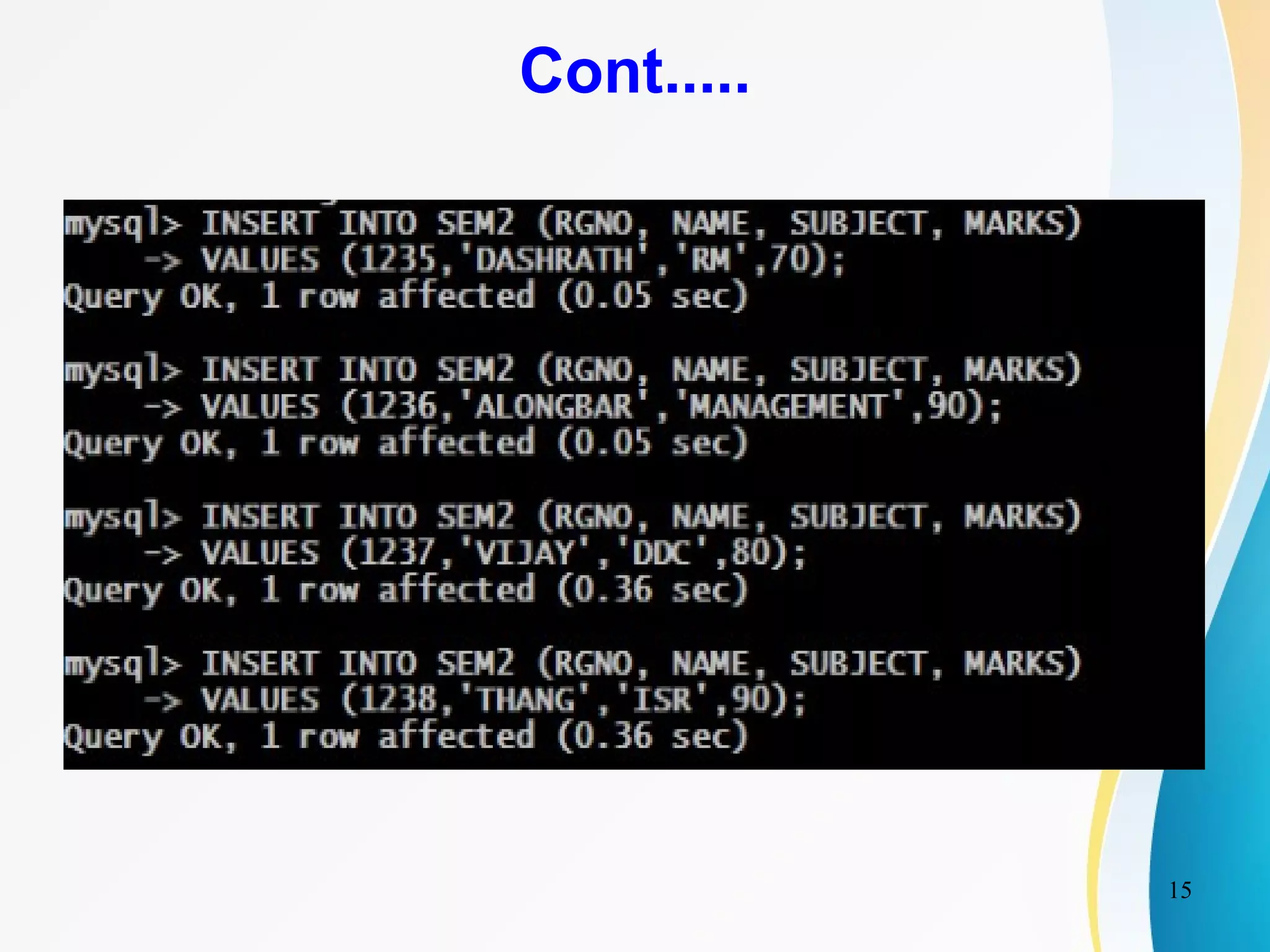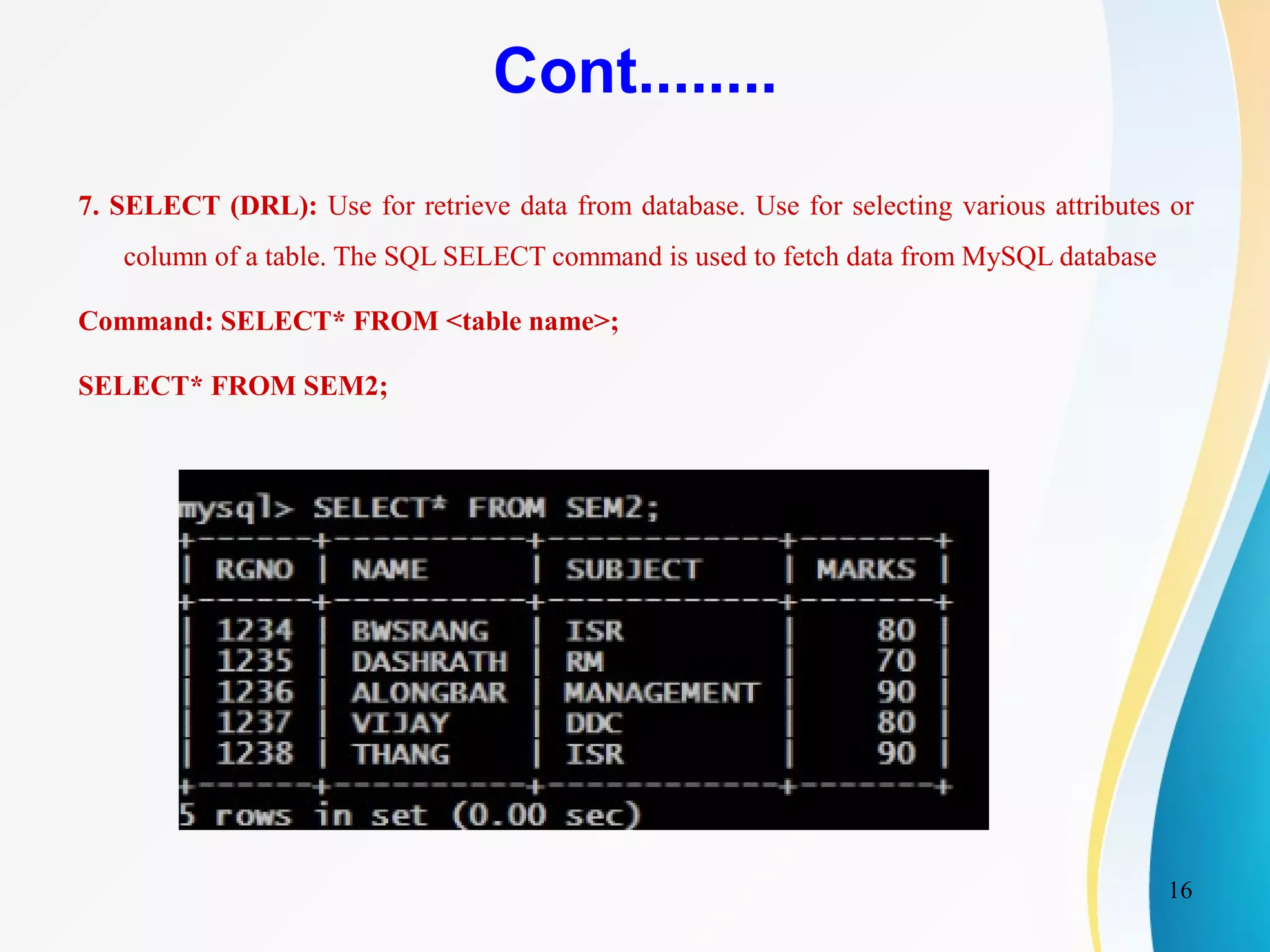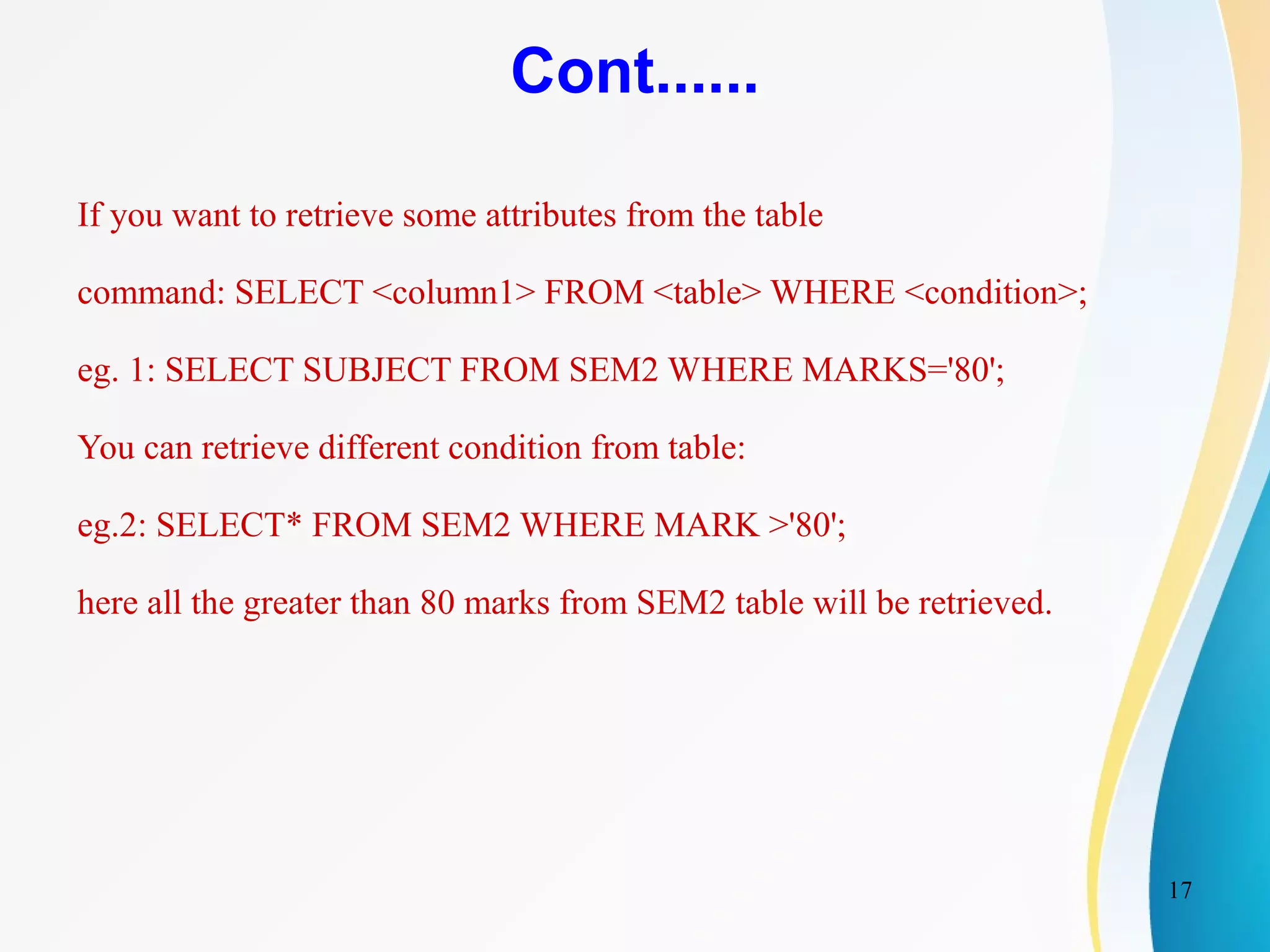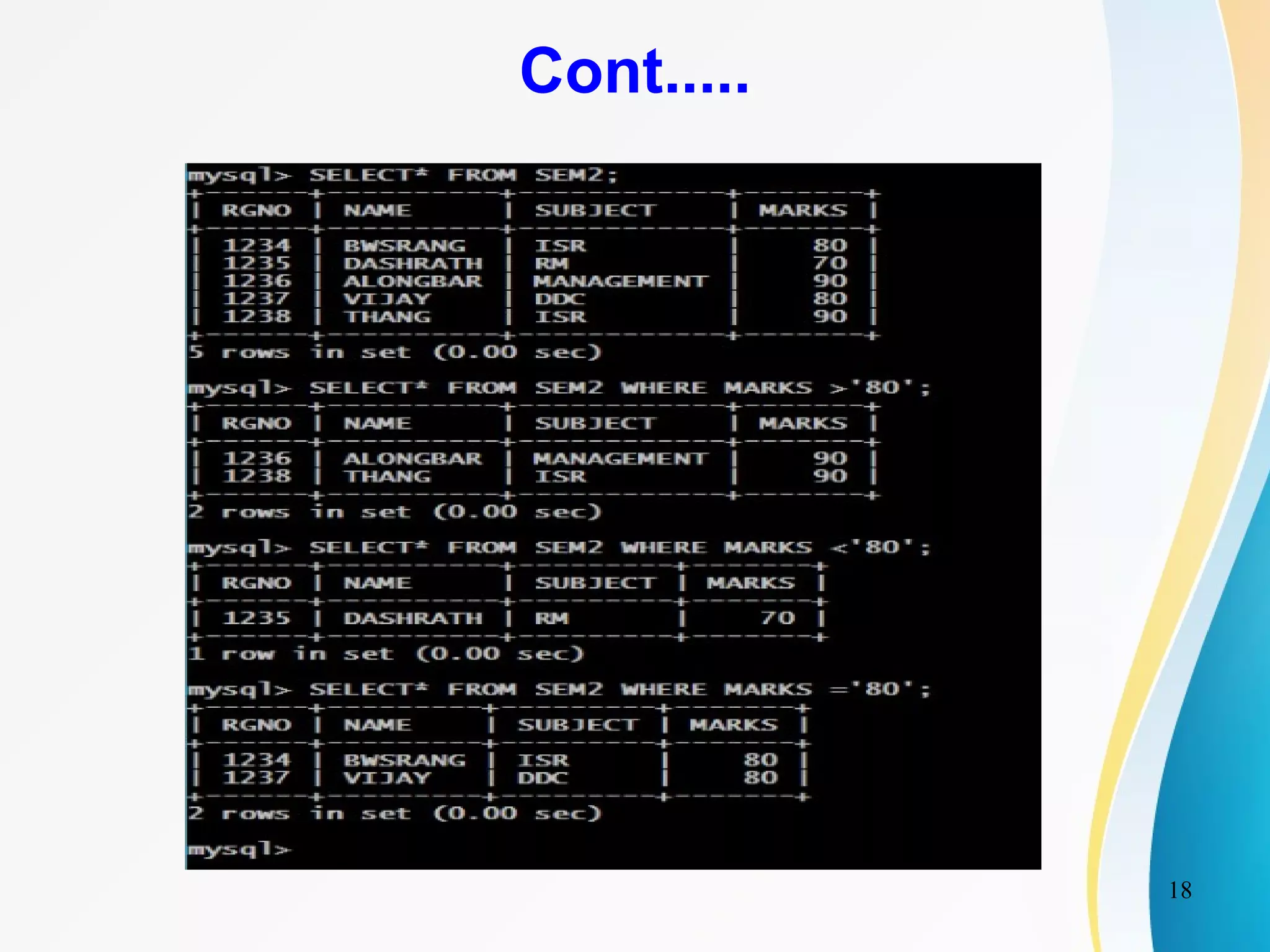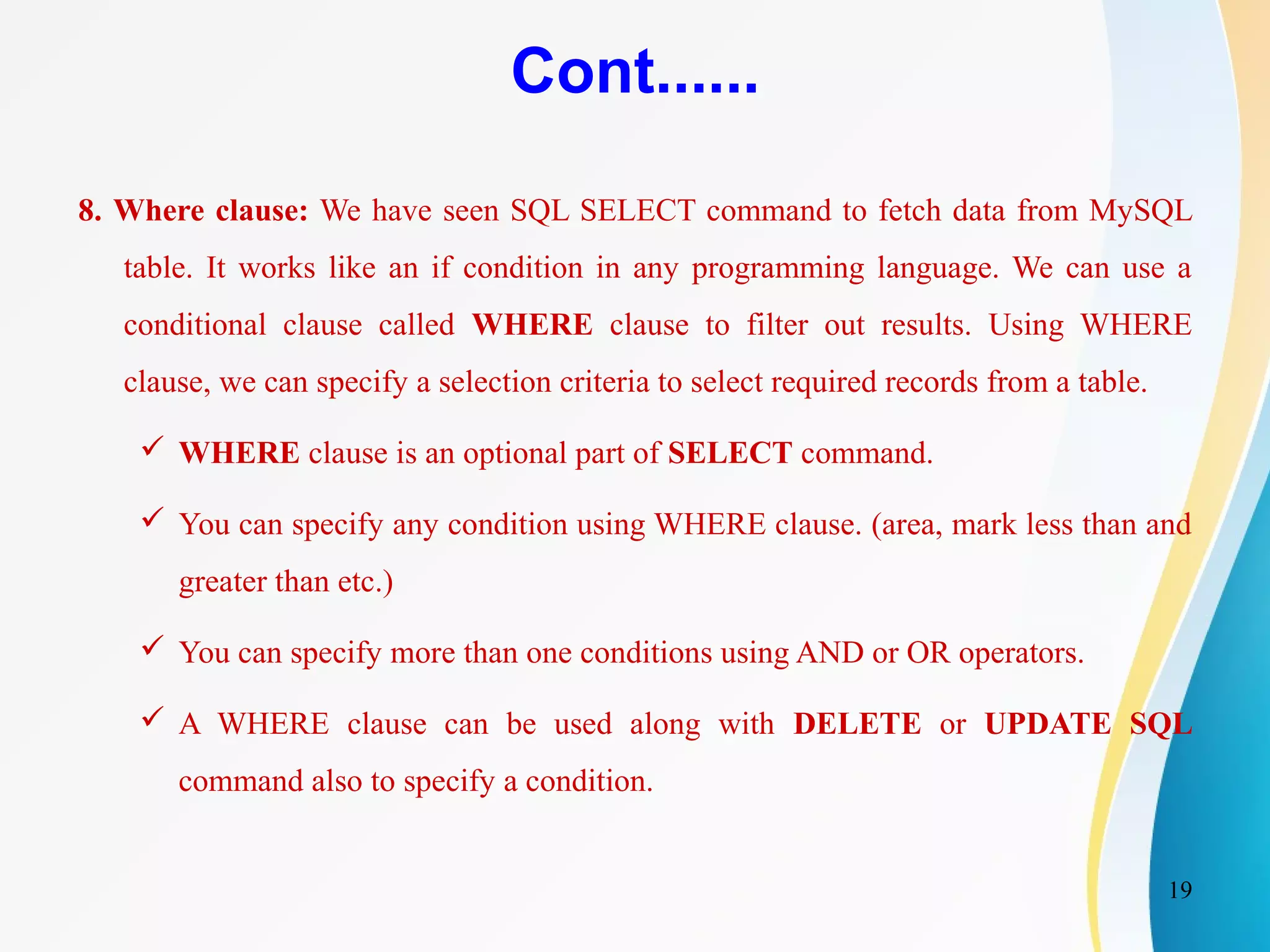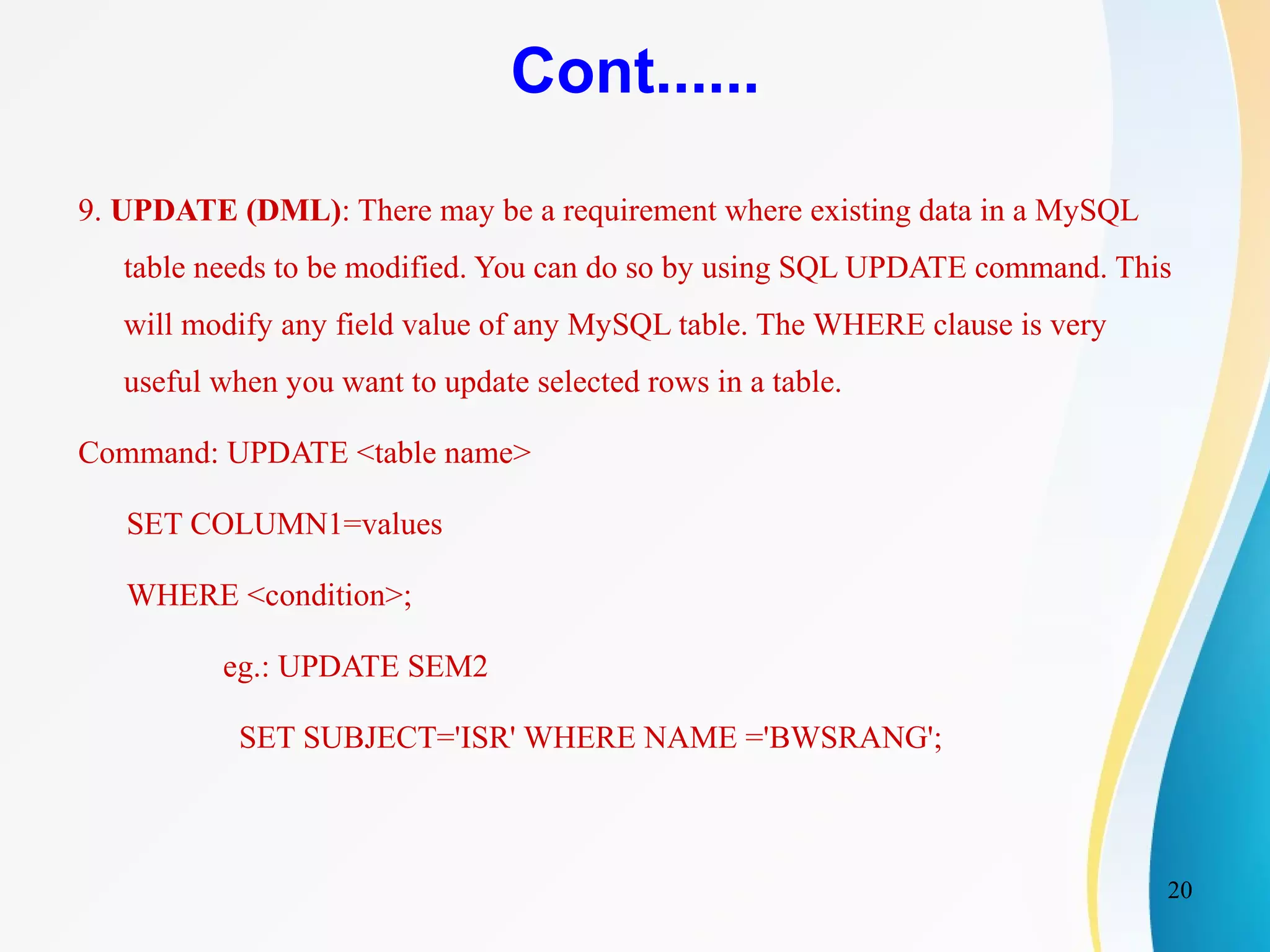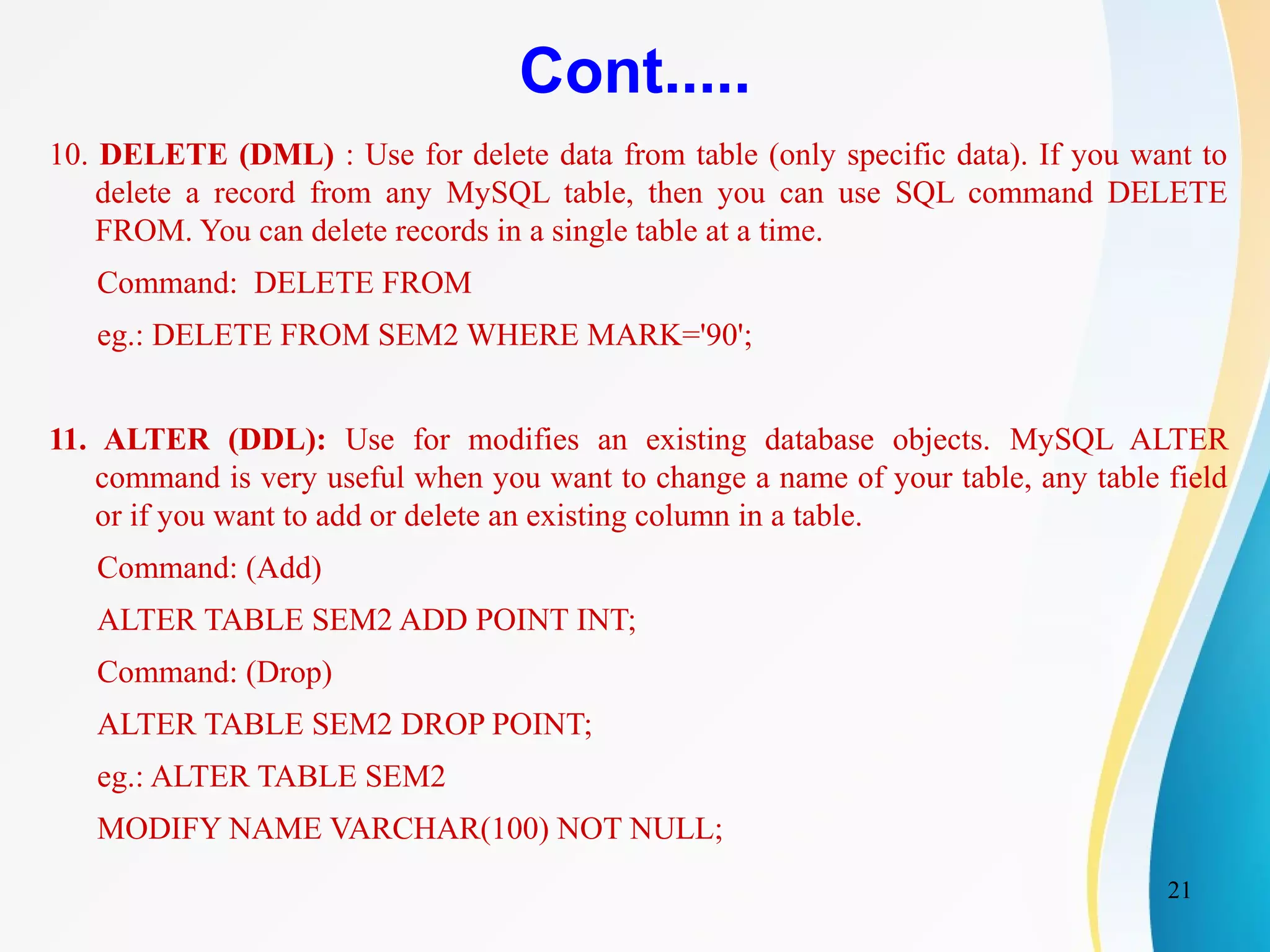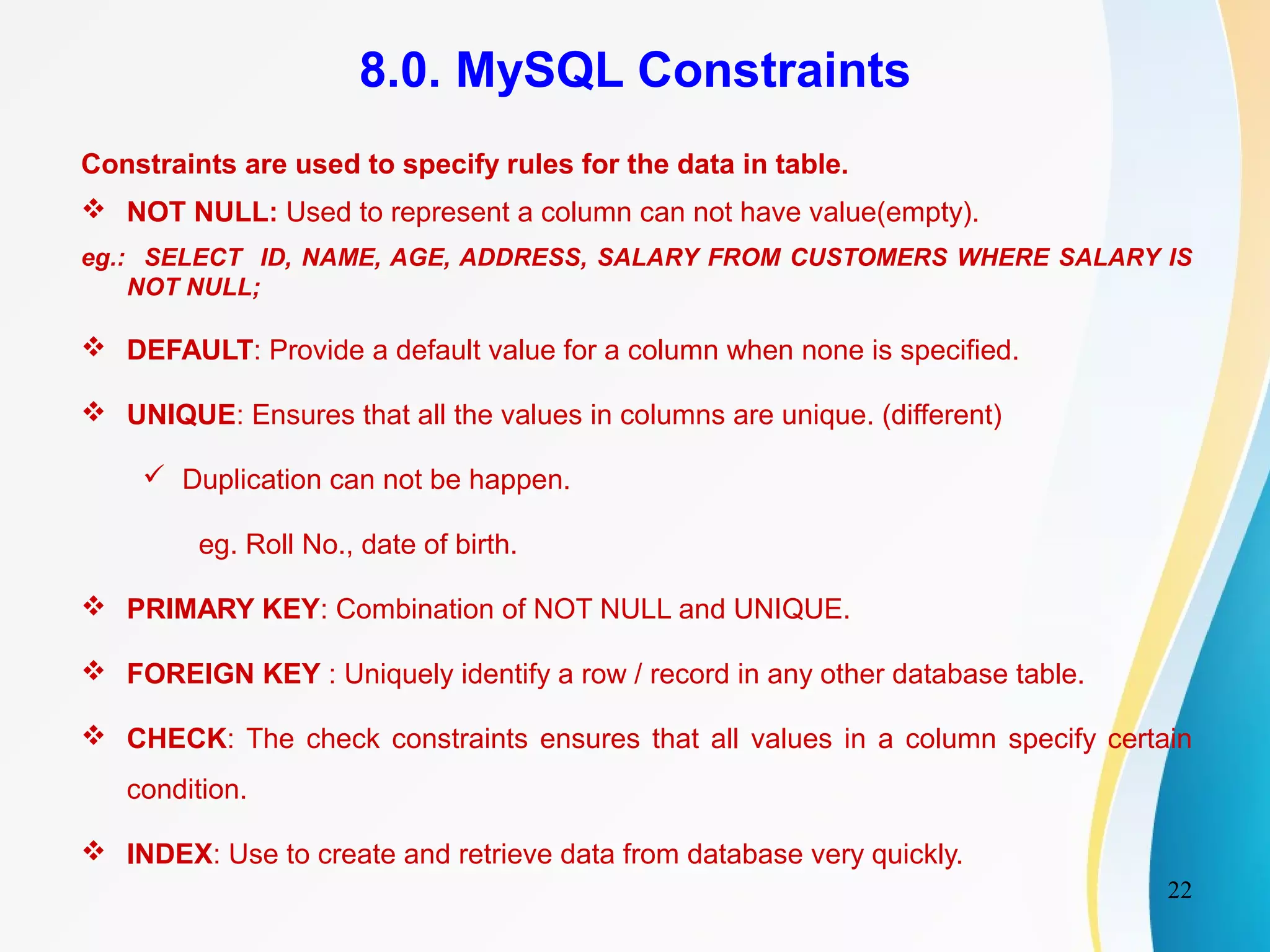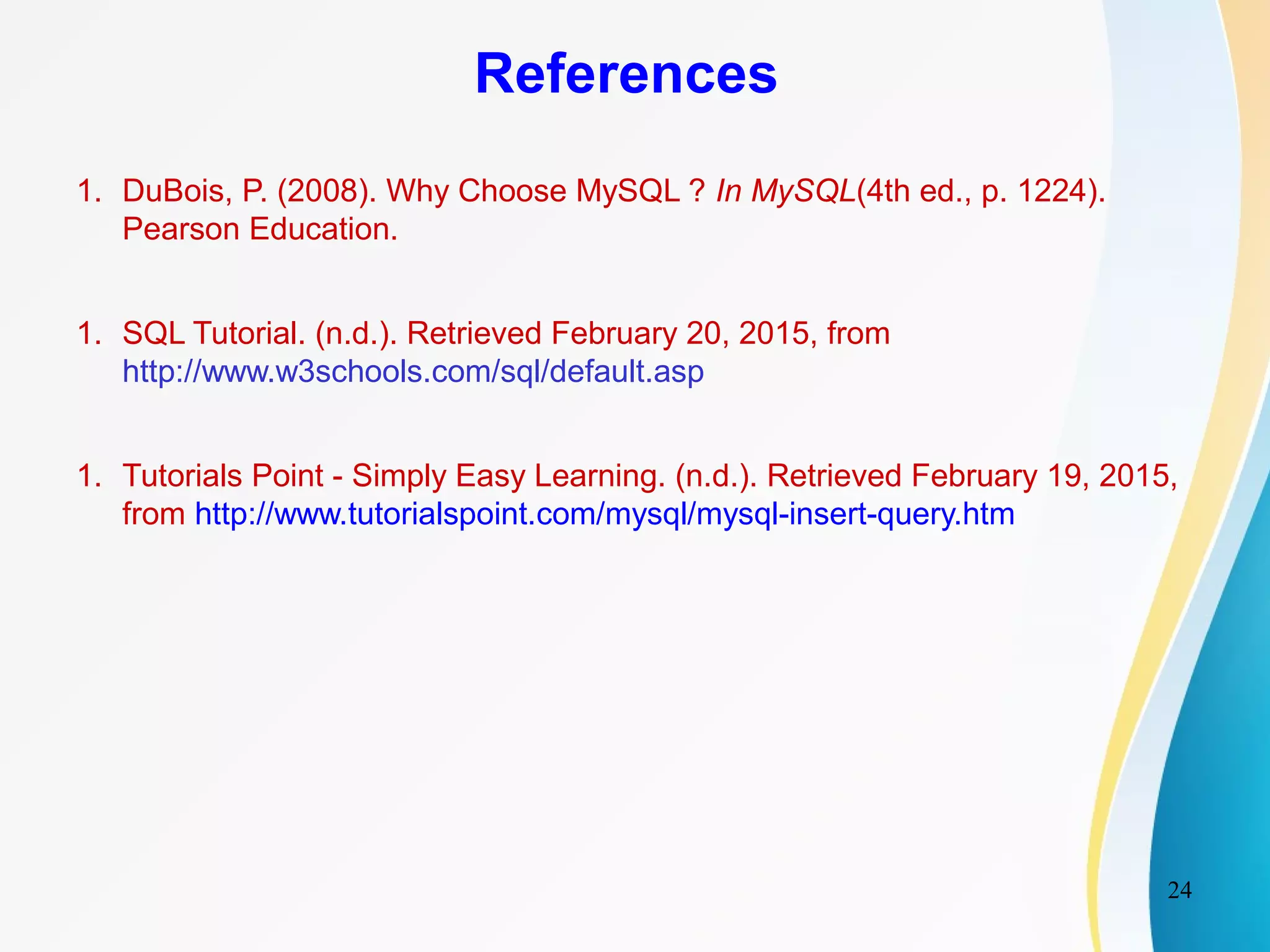MySQL is an open-source relational database management system. The document discusses the introduction to MySQL, its development history, installation, features, data types, basic commands like CREATE, SELECT, UPDATE, DELETE. It also covers MySQL constraints. MySQL is widely used for web applications due to its speed, ease of use and open source nature. It can store and manage large volumes of data across different tables using relationships.
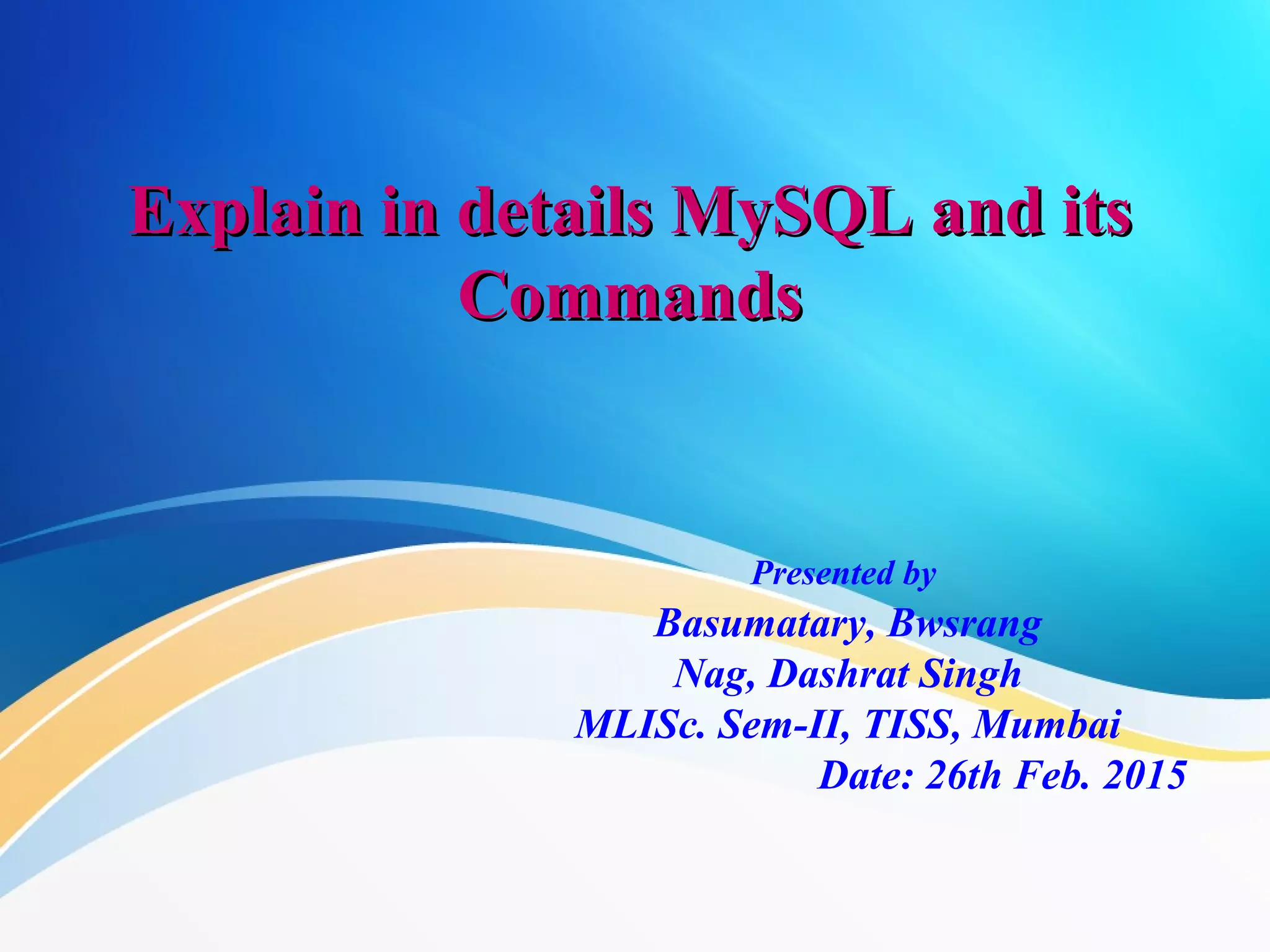
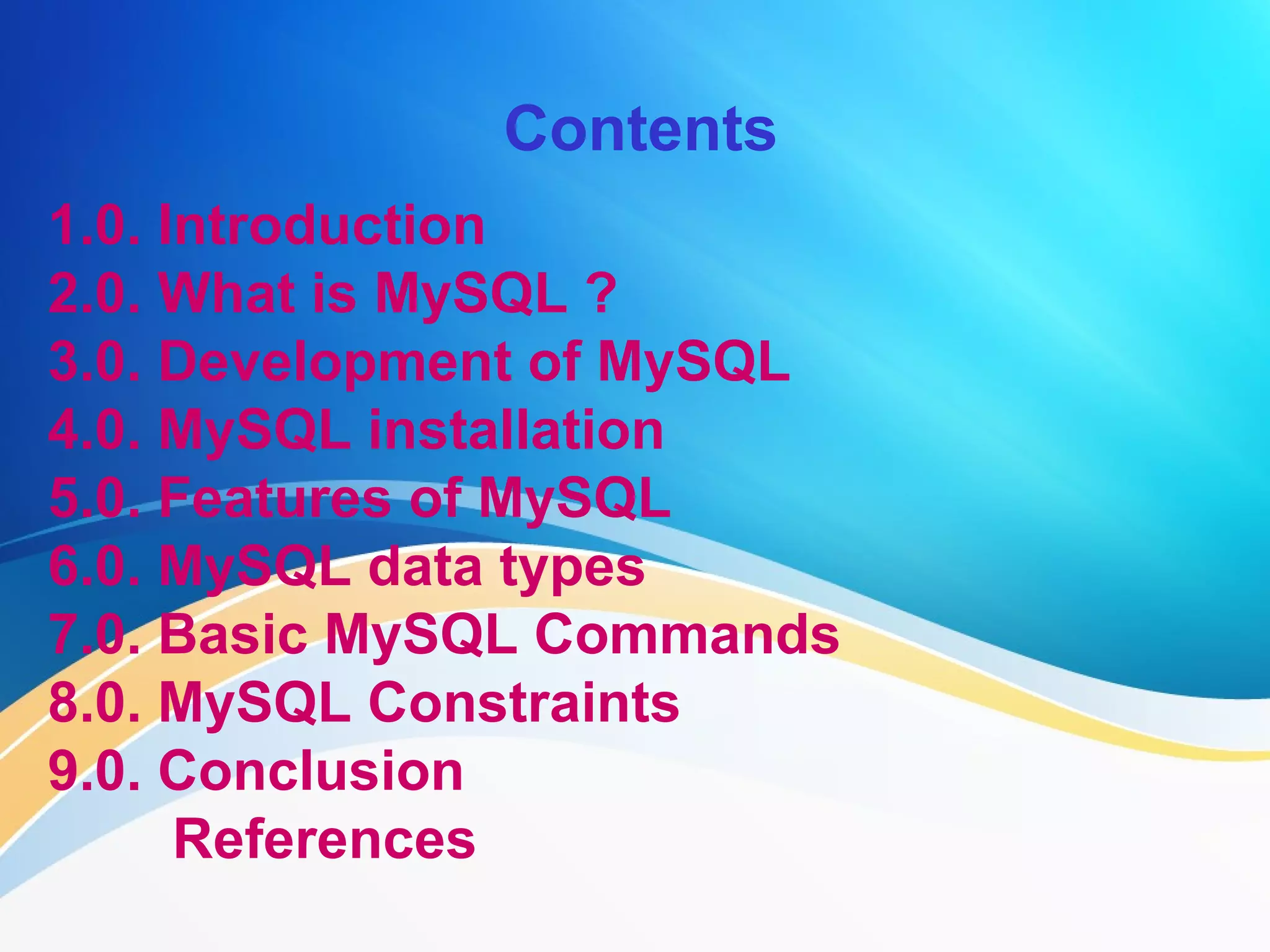
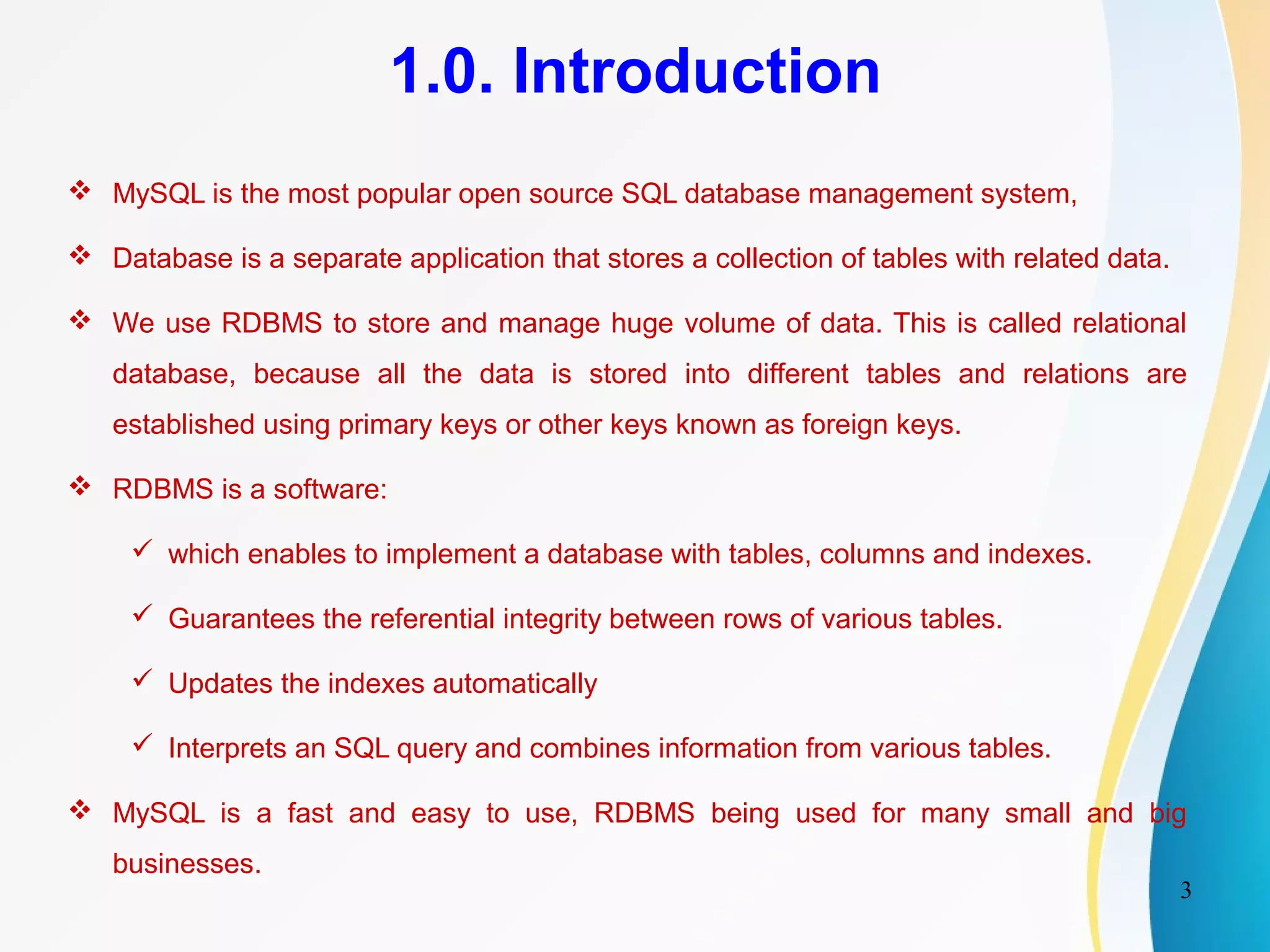
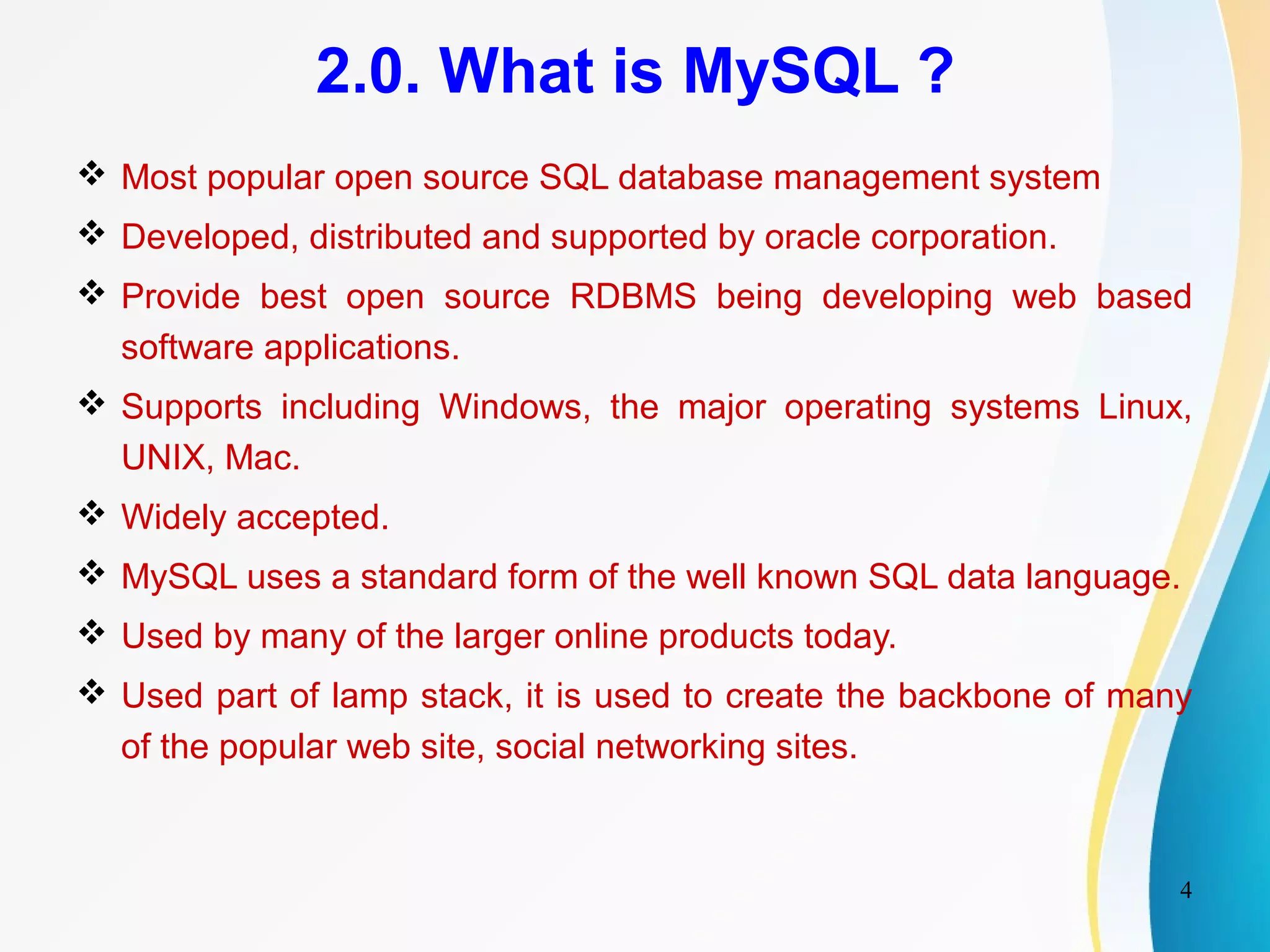
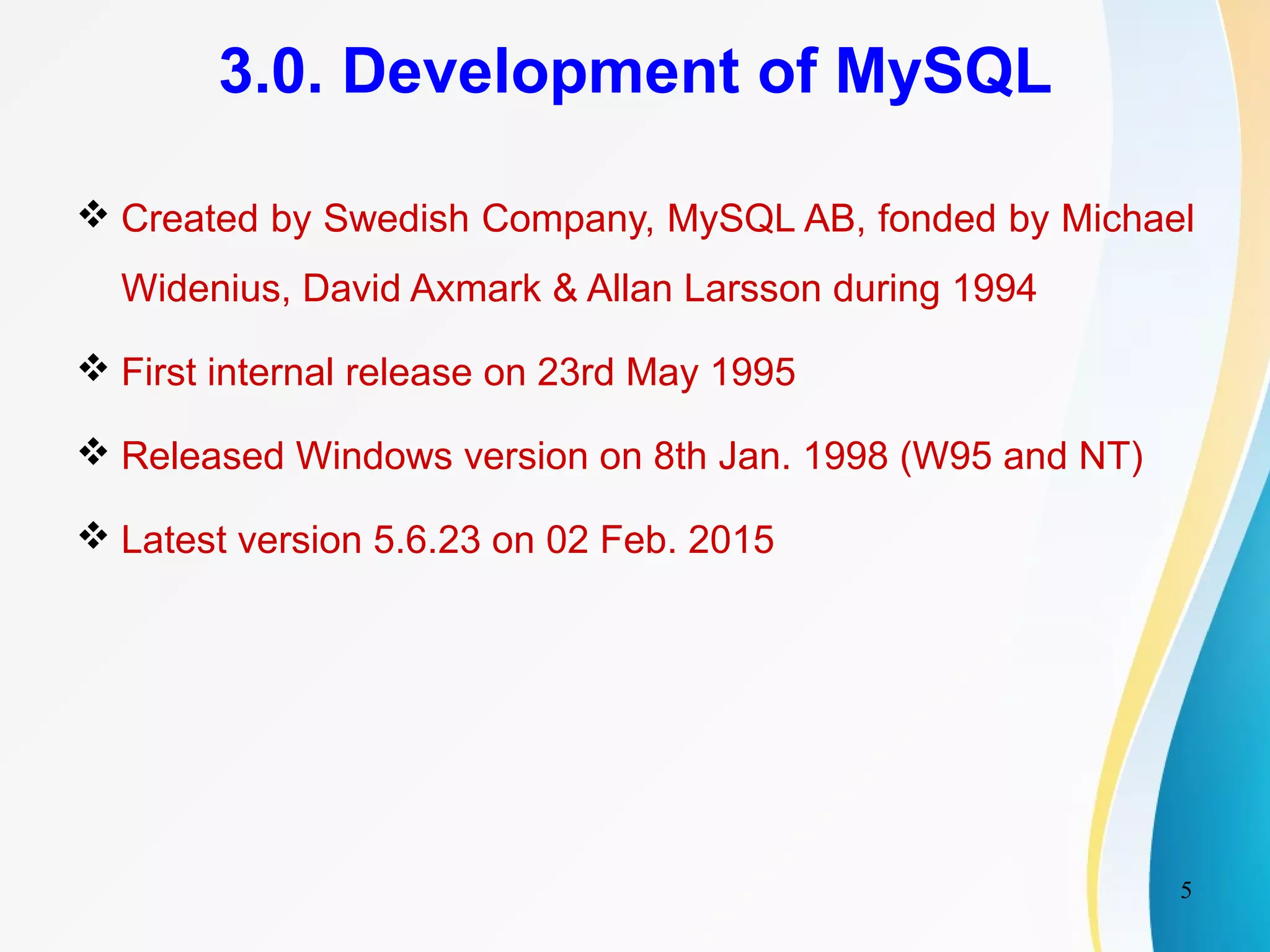
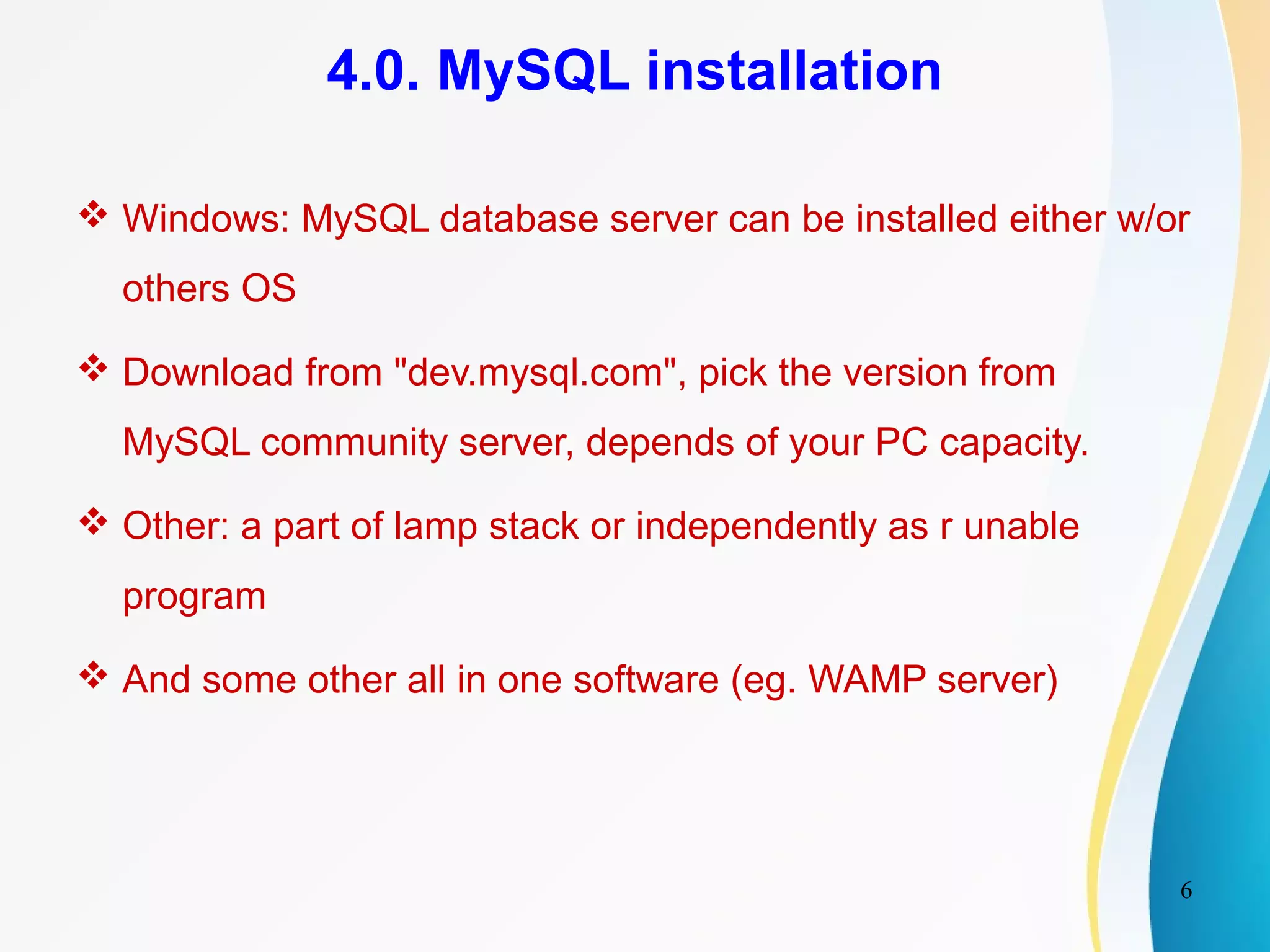
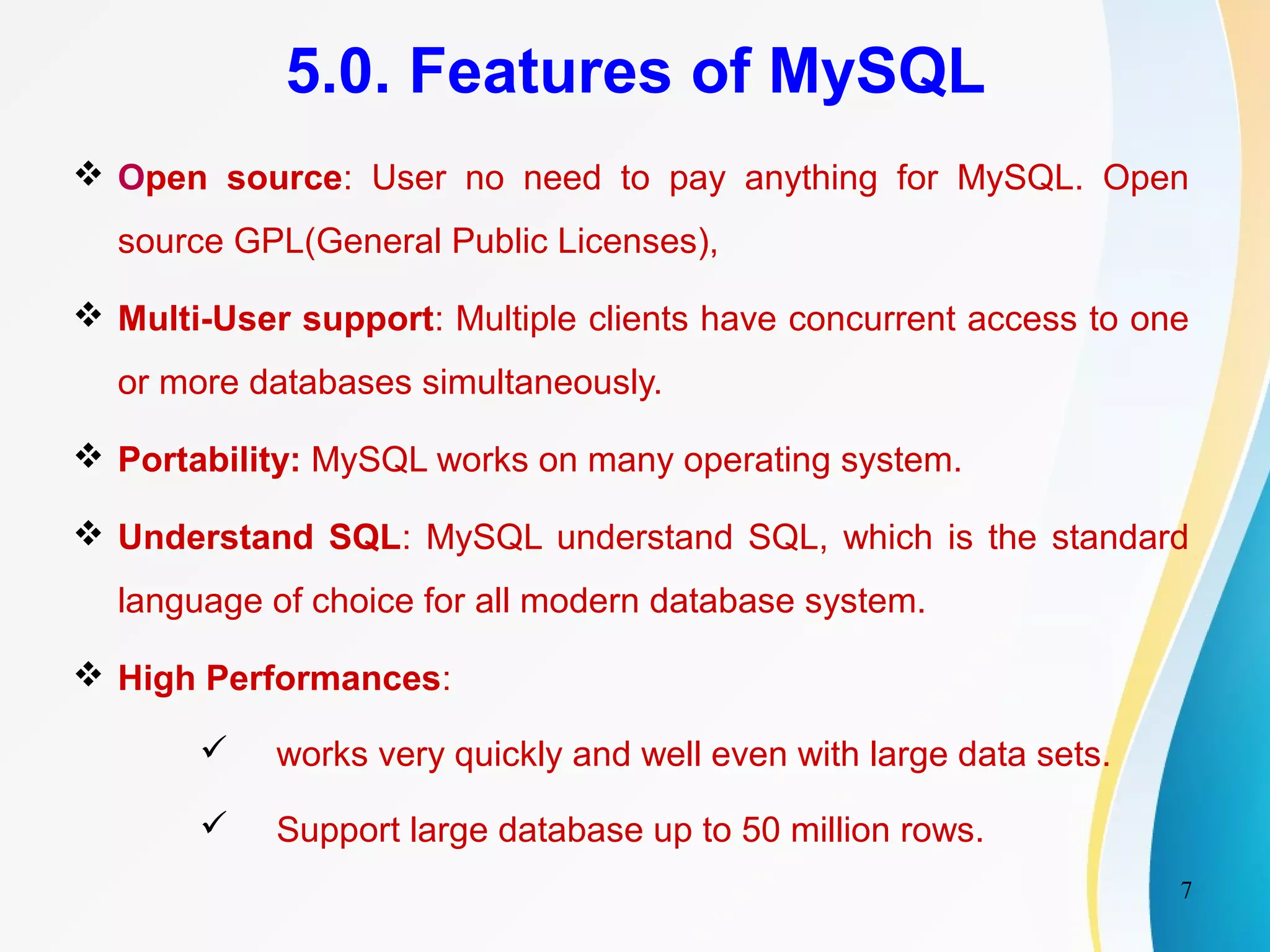
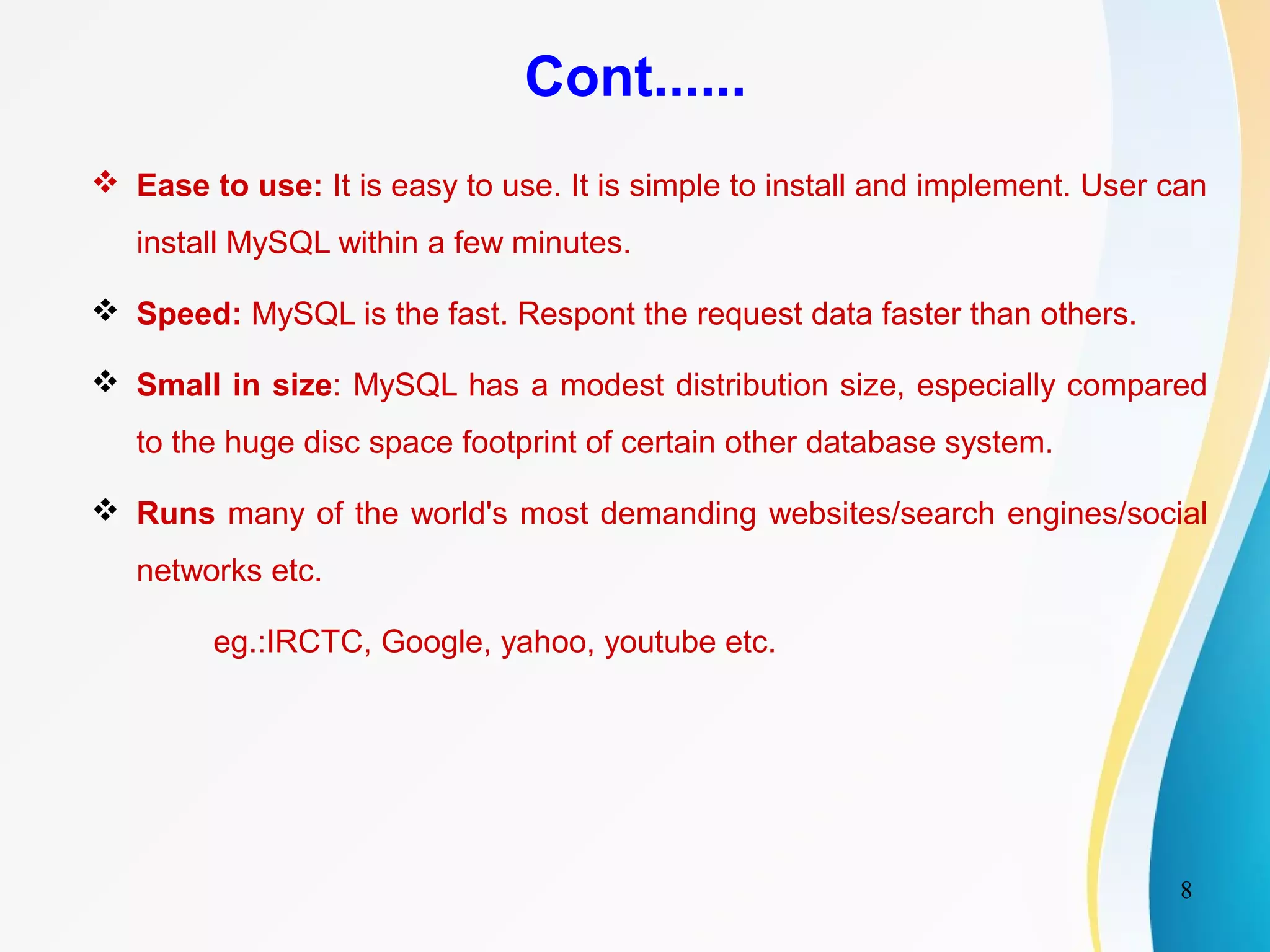
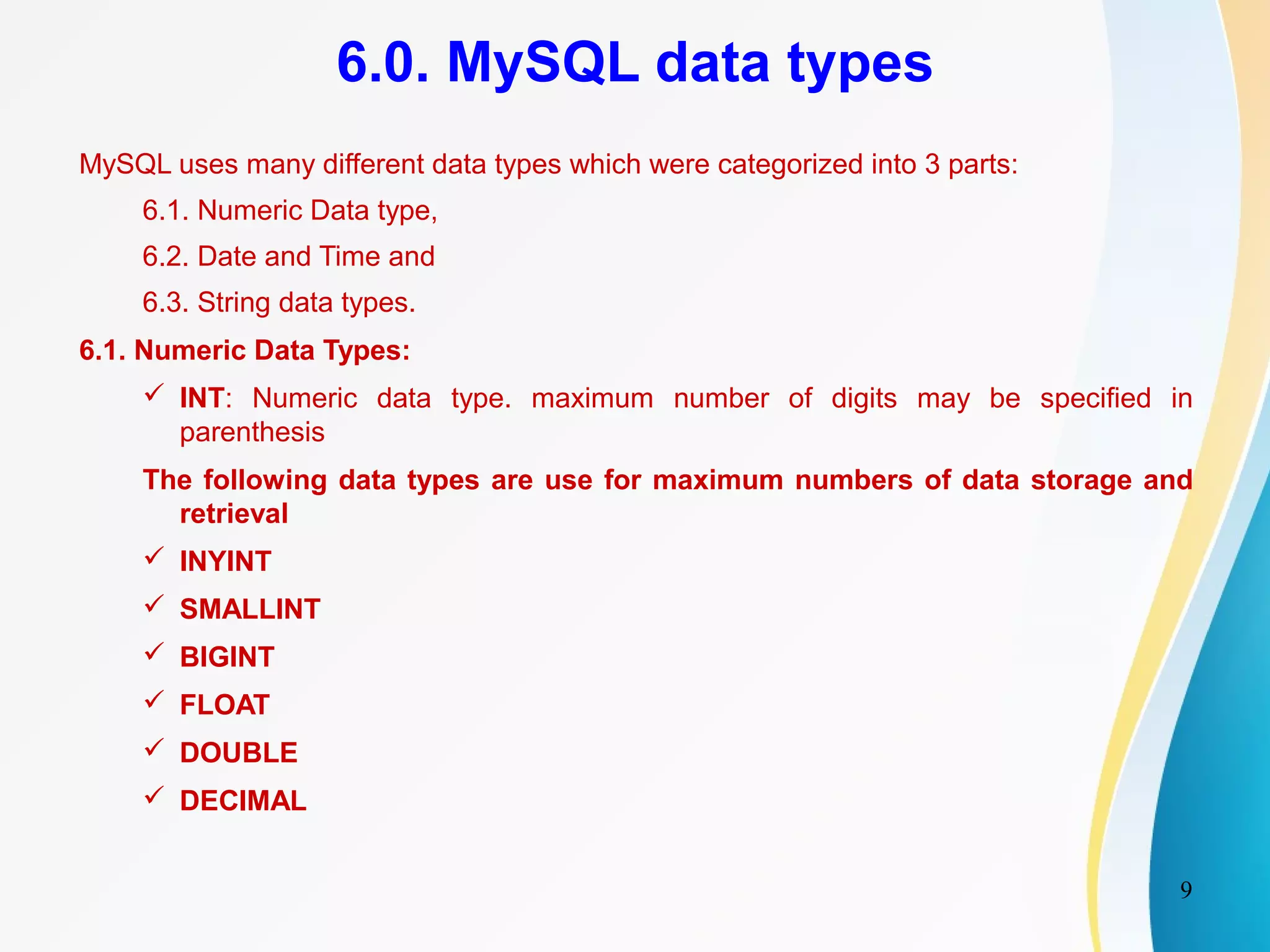
![10
Cont......
6.2. Date and Time Types:
DATE: Format: YYYY-MM-DD
DATETIME: Date and time combination. Format: YYYY-MM-DD HH:MI:SS
TIMESTAMP: This values are stored as the number of seconds. Format like YYYY-MM-DD
HH:MI:SS
TIME: Format: HH:MI:SS
YEAR: Year in two-digit or four-digit. [eg. two digit: 80 to 90, representing years from 1980 to
1990]
6.3. Text (String) Types:
CHAR: Fixed length string(contain letters, numbers, and characters). The fixed size is specified
in parenthesis. Can store up to 255 characters.
VARCHAR: Field is a set of character data of indeterminate legth. The maximum size is
specified in parenthesis. Can store up to 255 characters
TINYTEXT: Holds a string with a maximum length of 255 characters
BLOB or TEXT: These are use for huge data storing. Holds a string with a maximum length of
more than 65 thousand characters.
MEDIUMBLOB or MEDIUMTEXT: Holds a string with a maximum length of more than 16 lakh
characters.
LONGBLOB or LONGTEXT: Holds a string with millions of characters
ENUM: You enter the possible values in this format: ENUM('X','Y','Z').](https://image.slidesharecdn.com/mysqlanditsbasiccommands-150226033905-conversion-gate02/75/MySQL-and-its-basic-commands-10-2048.jpg)
